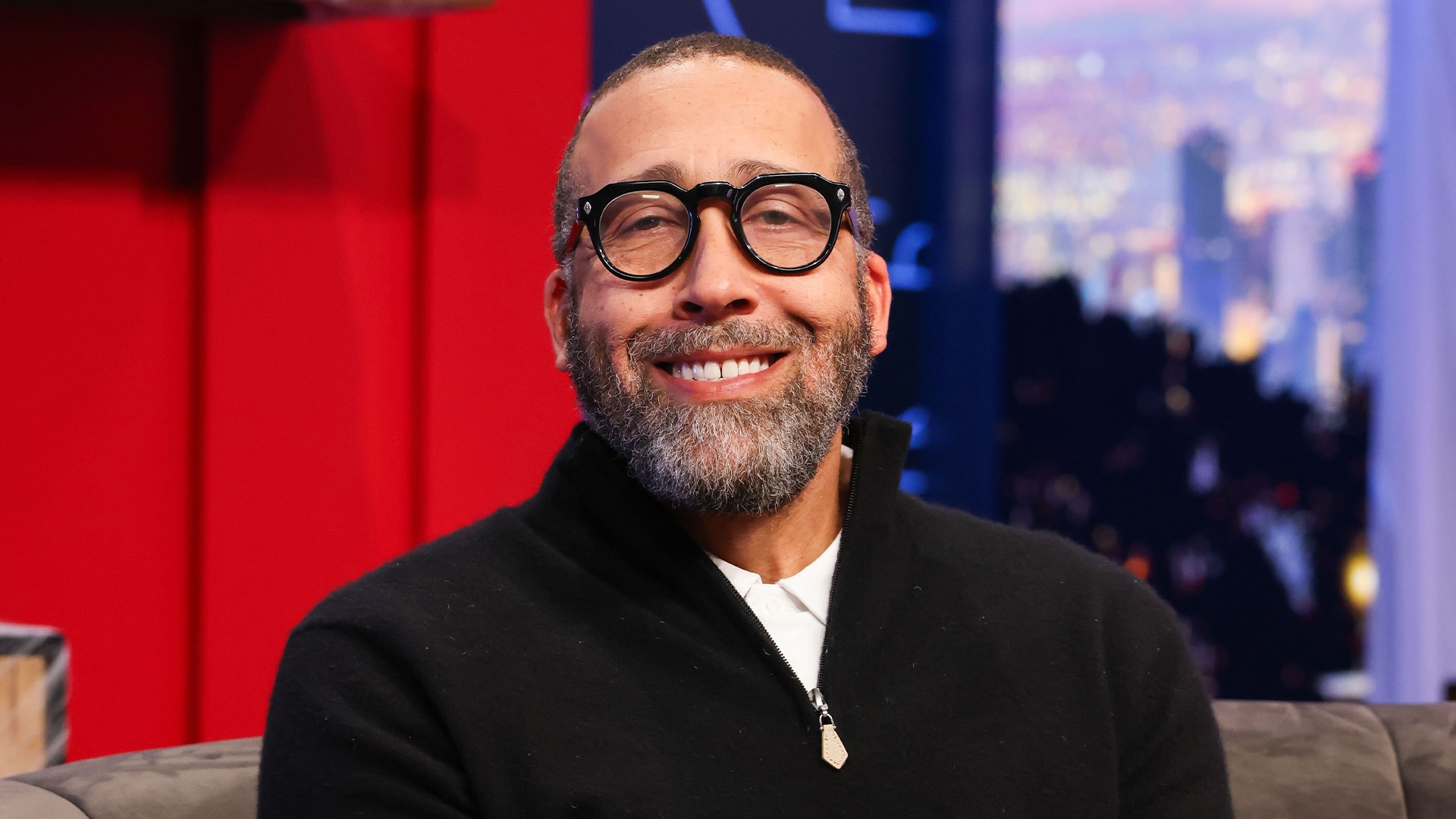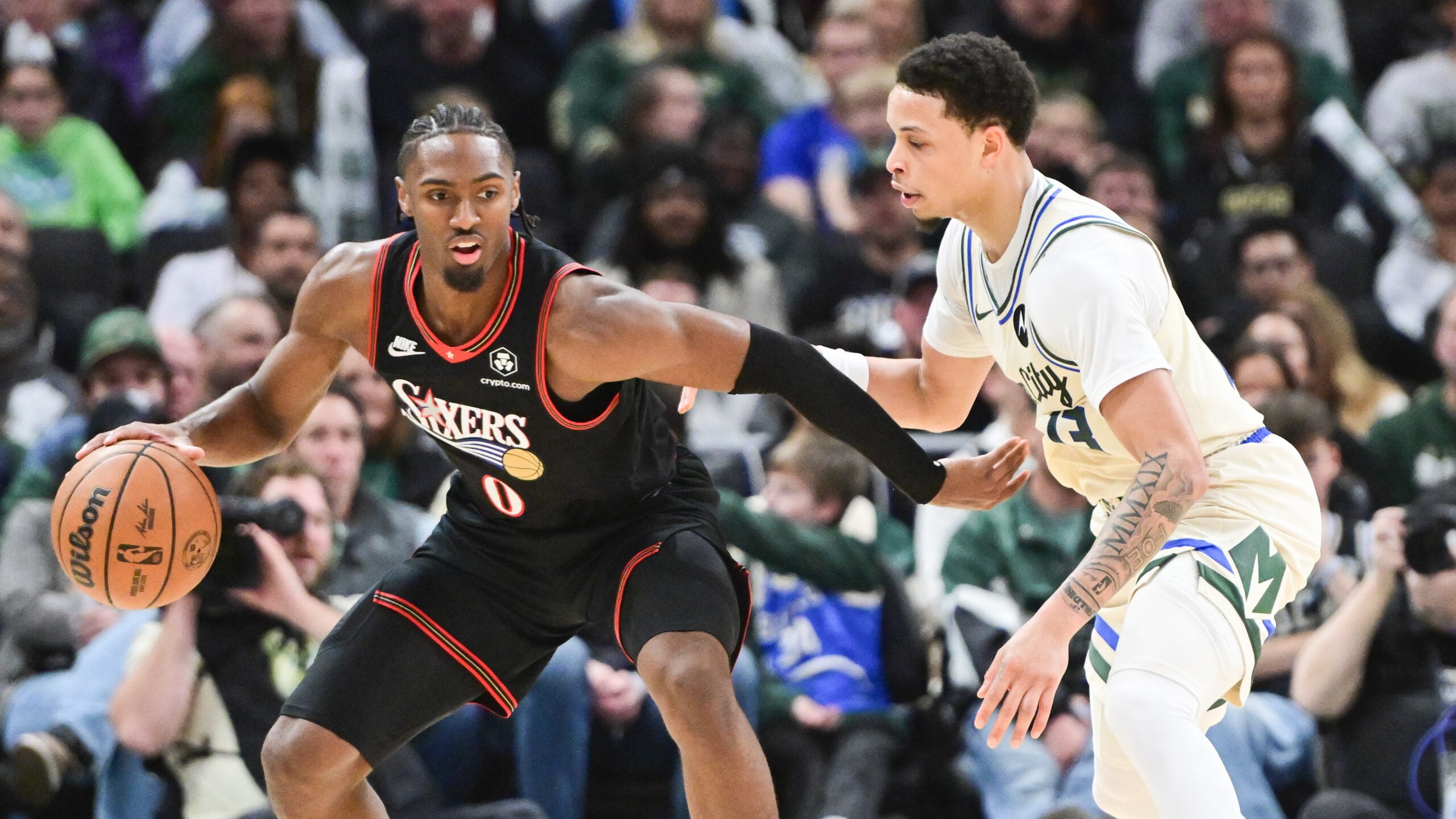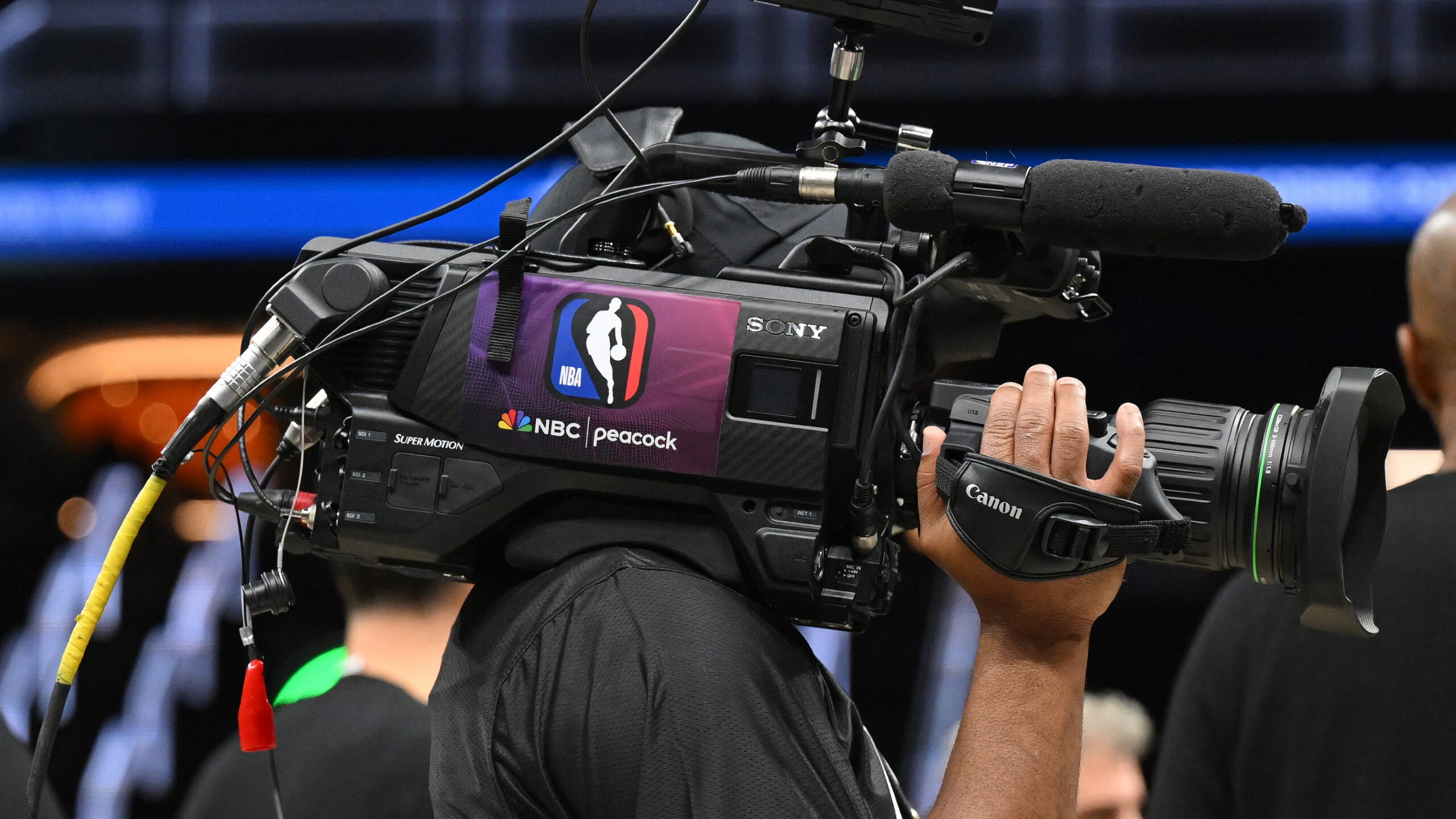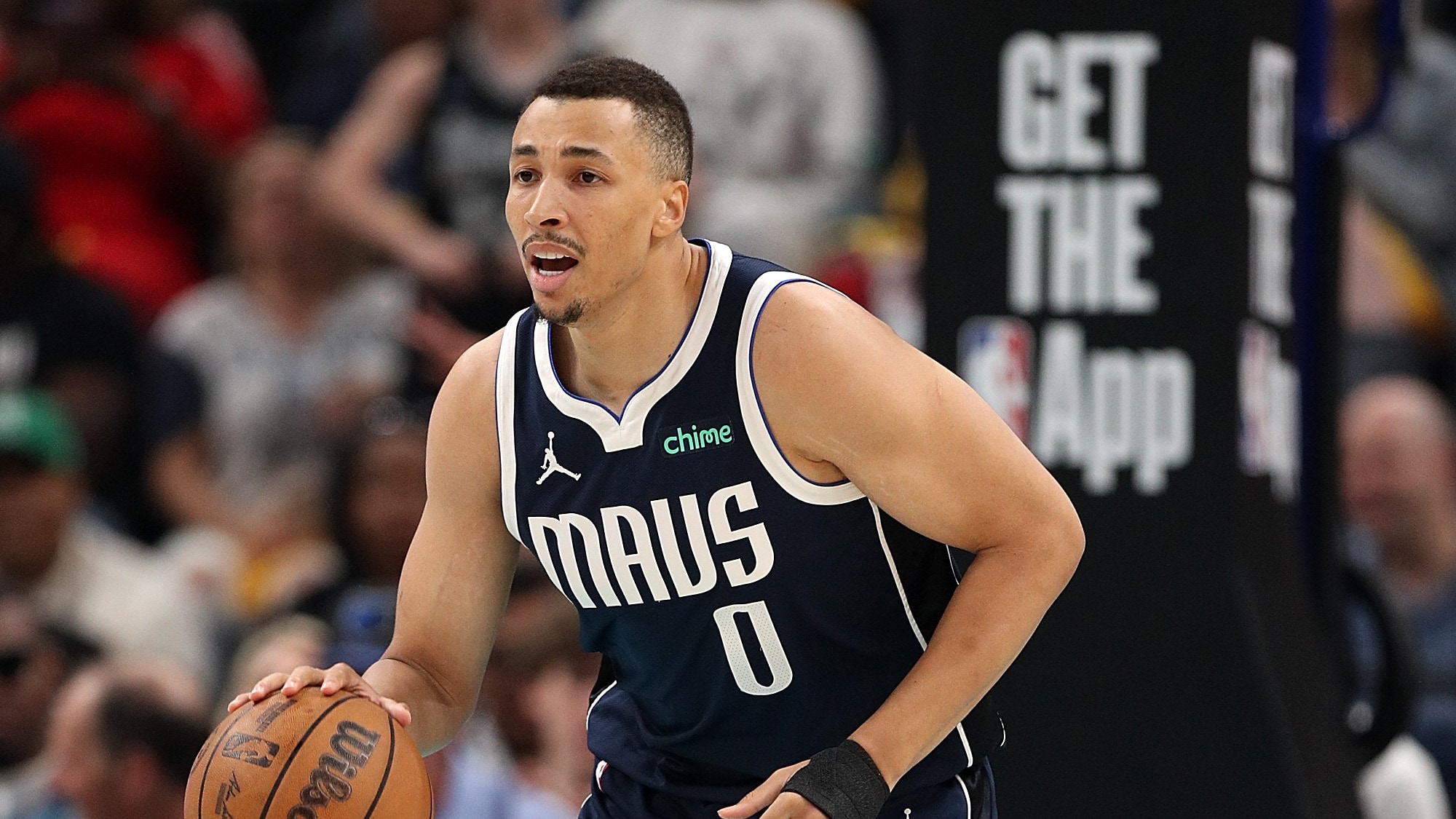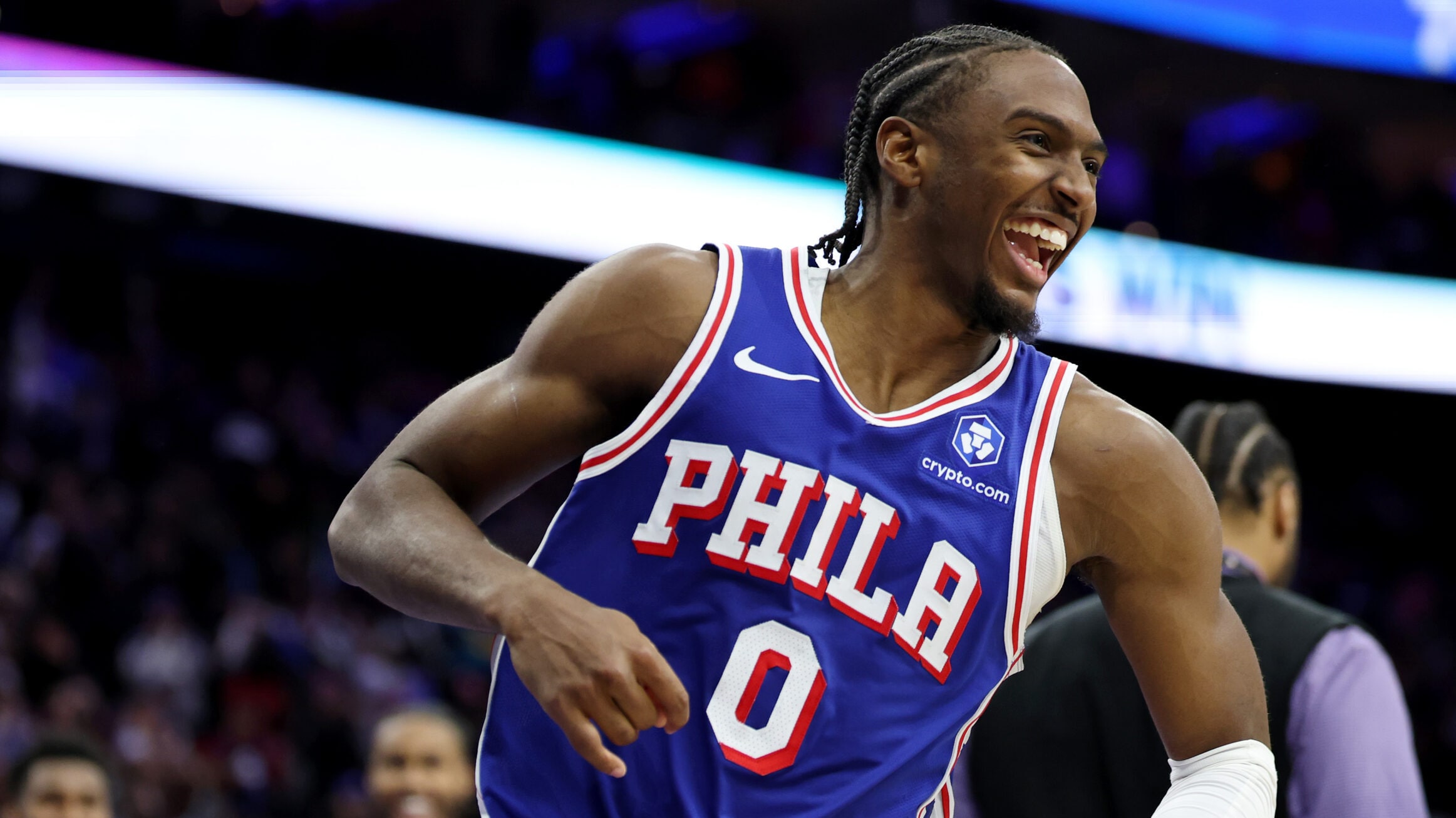
Cam Johnson highlights a significant offseason makeover for the Nuggets, who also shaved salary off their payroll.
2025 Free Agency: Complete coverage
The most stressful spot on the NBA calendar isn’t the postseason or the Draft Lottery or even the NBA Finals. Those events involve only a smattering of teams and players.
Instead, it’s the first week of free agency, a trying time when front-office reputations rise or fall, when contenders for the next season are effectively built, when dozens of players, general managers and agents make major decisions — often on a moment’s notice.
And to make this five-alarm fire even hotter, it takes place just days after the NBA Draft, and a few days before NBA Summer League. That’s a pretty big sandwich to swallow.
Just imagine the hectic phone calls at all times of day and night, being a fly on the wall of war rooms, the number of promises made and then broken, all the hopes and dreams, and of course the generational money given to the lucky free agents who find themselves in demand.
Suddenly, we all get a thesaurus lesson on the buzzwords: First apron … second apron … luxury tax … mid-level exception … and so on.
That said, free agency as a whole doesn’t bring the same level of combustion as before. That’s because superstars and emerging superstars mainly stay put for financial reasons. Their teams are willing and mostly able to keep them from the market by offering the most money. Plus, the number of young players entering their prime who decline that money and decide to leave anyway is minuscule.
This means most of the free agency movement among A-listers is confined to aging players who already banked hundreds of millions of dollars and are willing to test the market while perhaps taking less in exchange for their preferred destination.
Typically, player movement in the first week of free agency involving the biggest names often occurs via trades (which are often initiated by players who aren’t free agents but effectively strong-arm their way out of town). They either demand a trade or become agreeable to one if their team raises the subject and can make a mutually beneficial deal.
It all makes for a summer adventure and creates winners and losers without a single game being played.
Here are seven takeaways from the first seven days of 2025 free agency:
1. Bucks want what Giannis wants
NBA TV takes a look at a pair of reported moves from the Bucks, including a 'bit of a gamble' in waiving Damian Lillard.
Superstars always held leverage within their organizations. This isn’t a new or novel development. Their voice brings power. Which brings us to Giannis Antetokounmpo.
He wants to win now … and who doesn’t? Especially someone who already tasted champagne and is arguably one of the two best players of the last half-decade.
The Bucks are so anxious, perhaps even desperate, to salvage his prime and avoid a trade request from him that they’ve spent the years since their 2021 championship trying to fortify a roster that … still needs help.
The latest gamble was using the stretch provision on rehabbing star Damian Lillard, making him a free agent while coping with roughly $22 million of dead money on the salary cap for each of the next five years.
This allowed them to reportedly reach a deal with Myles Turner, a good rim protector and stretch big man who seemingly fits well next to Antetokounmpo. Yet Turner is a marginal upgrade over the similarly skilled Brook Lopez, who left in free agency at a fraction of the cost.
Here’s why the Bucks, who lost in the first round of the playoffs, are in this position:
They gave rich extensions to declining starters Khris Middleton and Lopez to keep the championship core together and dumped Middleton for Kyle Kuzma, who had a poor first season in Milwaukee. The Bucks never drafted or acquired young talent good enough to replace those players and traded for the aging Lillard, who suffered an Achilles injury and could miss all of next season.
They chose not to just keep Lillard on the books for at least one more season, and here’s the big one — they dismissed any idea of trading Antetokoumpo even if it produces a massive windfall.
So here they are. Meanwhile …
2. No Joke in Denver
Much like Antetokounmpo, Nuggets star Nikola Jokić is still trying to return to the promised land, each time coming up short with a roster that kept losing assets. The difference is that Jokić is so good that the Nuggets — with two hobbled starters — pushed eventual champion OKC to a seventh game in the Western Conference semifinals.
The Nuggets did a front office housecleaning in anticipation of this summer, and the early returns are promising. Denver made necessary upgrades within the confines of the salary cap, which is never easy to execute these days.
Incoming: Cam Johnson, Tim Hardaway Jr., Bruce Brown and (maybe) Jonas Valančiūnas. Outgoing: Michael Porter Jr., Dario Šarić and an unprotected 2032 pick that could land in the post-Jokić era.
Johnson is a solid scorer and defender, Hardaway can still get buckets, Brown played on the championship-winning team as a defensive spark plug and Valančiūnas is a rugged rebounder who can be productive whenever Jokić sits.
The Nuggets did this while trimming $34 million from the payroll and avoiding the luxury tax this season. It was a busy stretch for a franchise that suffered from free-agent losses since winning the 2023 title. Denver could be OKC’s biggest threat once again.
3. Hawks flying
Onsi Saleh, Atlanta’s new general manager, arrived soon after the season and hit the ground running. The Hawks surrendered little to get a lot over the past few weeks and remade themselves into a team worth watching next season.
They seized upon the salary-dumping in Boston to reportedly grab stretchy big man Kristaps Porziņģis, who can pick-and-pop with Trae Young. They recognized that the Timberwolves couldn’t pay everyone and grabbed Nickeil Alexander-Walker, a combo guard whose defensive skills will fit well next to NBA steals leader Dyson Daniels in the backcourt.
Luke Kennard, a reliable 3-point shooter, came on a cheap one-year deal. And all this happened after the Hawks’ Draft-day swap that fetched the Pelicans’ unprotected first-rounder in what projects as a rich draft next summer.
This is a good start for a team anxious to make noise in a conference that’s suddenly wide open. The Hawks still have assets and cap room to swing another deal between now and the February trade deadline. Next up — a possible extension for Young?
4. Rockets ready to liftoff
The Athletic's Kelly Iko looks at Houston's addition of Kevin Durant, extending Jabari Smith Jr. and free-agent targets.
Houston entered the summer with a young, emerging roster, a handful of assets and money to spend. That’s a delicious combination when it’s time to upgrade, and the Rockets chose to press the gas pedal and go for it.
It could’ve been easy, if not understandable, to weigh the odds of catching up to the level of Oklahoma City and decide to improve gradually, not suddenly. Instead, the Rockets threw down the gauntlet, which should be applauded.
They surrendered replaceable pieces for Kevin Durant, added a defender in Dorian Finney-Smith to replace Dillon Brooks, welcomed back Clint Capela to add size and depth and gave former lottery pick Jabari Smith Jr. an extension.
The Rockets seem solid in all of the important categories (scoring, defense, size) and should be better than last season’s 52-win squad. The only potential issue is at point guard. There’s an awful lot of responsibility being heaped on Fred VanVleet because Houston lacks a proven secondary playmaker and second-year guard Reed Sheppard must do for now.
5. Shai me the money
NBA TV looks at Oklahoma City's depth chart after agreeing to an extension with the reigning Kia MVP.
To the winner goes the spoils, and in this case, a reported four-year, $285-million extension for Shai Gilgeous-Alexander, which will give him the largest annual salary in NBA history.
For now, anyway. Yes, this will be a temporary crown because the price for players who reach supermax status will only rise from here. That happens when the league inks record-setting media rights deals as revenue increases elsewhere.
What’s crazy is that Gilgeous-Alexander is just 26, yet this will be his second extension. He’s likely to get a third in 2030, when he can opt out, especially if his level of play remains high. It’ll be tough to top 2024-25’s run of NBA scoring title, Kia MVP, Finals MVP and title run, but he’ll still be in his prime.
The challenge for the Thunder will be locking up Gilgeous-Alexander, Jalen Williams and Chet Holmgren while keeping a supporting cast around that core three.
OKC has advantages: a projected rising cap in the future, exorbitant expansion fees (if the league adds teams), and a collection of first-round picks that OKC can use to bring in cheaper talent on rookie deals should the Thunder lose players to free agency.
But the price for A-list players just soared … and by extension, the B-list as well.
6. Celtics were shown the money, too
On the flip side of the financial see-saw are the Celtics, who saw the cost of doing business and flinched. With Jayson Tatum and Jaylen Brown being paid more than $200 million each (and the former rehabbing an Achilles injury suffered in the playoffs), the Celtics cut payroll. Porziņģis and Jrue Holiday were the reported casualties, and Al Horford could join them.
Teams aren’t willing to venture anywhere near second-apron luxury tax territory. It’s too restrictive and expensive. Those teams are essentially locked into rosters, with no wiggle room, and forced to write big tax checks. The penalties caused the Celtics to blink, and they’re a team that, assuming Tatum recovers, can challenge for a title.
7. Wolves missing the point
Minnesota reached the Western Conference Finals the last two seasons and just increased its chances of returning by agreeing to reported extensions with Naz Reid and Julius Randle. Both players hold important roles for the Wolves and neither wanted to leave. It reflects positively on the franchise, now run by Alex Rodriguez and Marc Lore.
However, the Wolves haven’t yet addressed their biggest need — point guard. Unless they do, they’ll probably never rise to the level of OKC, which exploited the Wolves’ lack of creators and forced plenty of turnovers in the West Finals matchup.
Mike Conley, the starter, showed his age (he’ll be 38 this fall). Rob Dillingham, a first-round pick in 2024, never got a chance — coach Chris Finch gave him just 10 minutes a game and kept him benched through much of the second half of the season. Because of that, Dillingham will essentially be a rookie all over again in 2025-26.
The contracts given to Randle and Reid cost Minnesota a chance to retain Alexander-Walker, who wasn’t a pure point guard anyway. With financial restrictions limiting their options, the Wolves must hope Dillingham is a quick learner, or get lucky between now and the trade deadline/buyout market.
* * *
Shaun Powell has covered the NBA for more than 25 years. You can e-mail him here, find his archive here and follow him on Twitter.
The views on this page do not necessarily reflect the views of the NBA, its clubs or Warner Bros. Discovery Sports.





